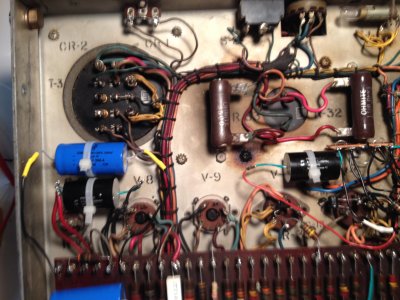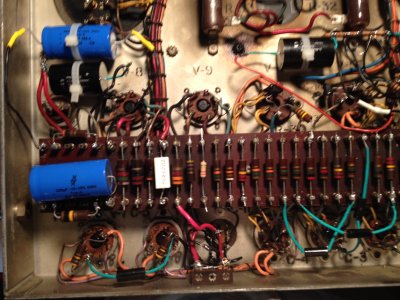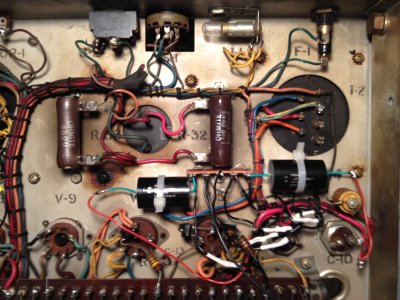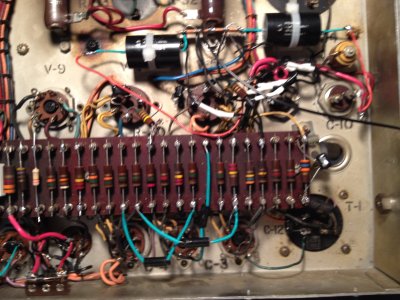rockpassion
New member
Ok, I am not sure I am hooking up my DVM properly. I hook my DVM black lead to the chassis then use my red lead to check connections. I rechecked my C3 capacitor and got 91 VAC on one side and 89 VAC on the other, not millivolts. Switching to DC I got 14.5 VDC on one side and -7.5 VDC on the other. Once again the minute I touch either side on C3 the buzz stops. But when I test every capacitor connection I get almost the same results with the exception the buzz only stops when I test on C3. I desoldered the C3 capacitor and tested it on my DVM and got the proper reading. So, I desoldered two other capacitors and they all tested out properly. Also, there is a meter that tests the two 807 tubes and the VR150 tubes. The meter registers on the first 807 but not on either the second 807 or the power tubes. So I have something wired incorrectly I think.
Per Grainger I rewired the input to a three wire setup and I also shorted the input wires to ground and the buzz was a little less.
My plans are to start checking my rewiring connections and resoldering all the connections to see if I have a bad solder joint.
One last question. This amp is almost 60 years old and one of the resistors, R34, is encased in a metal case. The resistor is a 0.2 ohm, 2 watt wirewound type. It appears to be grounded to the chassis. Can I replace this with a current equivalent wire wound resistor and ground it to the chassis?
I will say this definitely test one's patience but at the same time it is fun. I just wish that it wasn't deadly.
Onwards and upwards and once again thanks for all the help.
Richard
Per Grainger I rewired the input to a three wire setup and I also shorted the input wires to ground and the buzz was a little less.
My plans are to start checking my rewiring connections and resoldering all the connections to see if I have a bad solder joint.
One last question. This amp is almost 60 years old and one of the resistors, R34, is encased in a metal case. The resistor is a 0.2 ohm, 2 watt wirewound type. It appears to be grounded to the chassis. Can I replace this with a current equivalent wire wound resistor and ground it to the chassis?
I will say this definitely test one's patience but at the same time it is fun. I just wish that it wasn't deadly.
Onwards and upwards and once again thanks for all the help.
Richard




